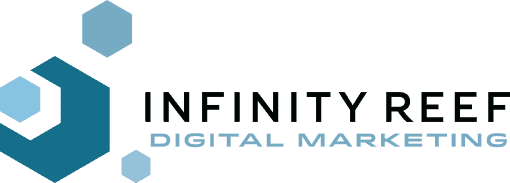Analog
We’d been designing and marketing for a few decades, mostly working for other people. Eventually, the idea of Infinity Reef came up. We needed to find office space, get utilities hooked up, file paperwork with the government, manage clients, assign work schedules, deliver the work, pay bills, get paid, figure out where the best take-out places were in the neighbourhood and so on.
If you’re a business owner, you know the drill. The ongoing operation of any business comes with set costs: mortgage or rent, inventory, wages, maintenance, utilities, accounting, security and more. That’s evolved over thousands of years from the oldest civilizations when writing on clay tablets was the norm. We all understand what a physical business involves.
While we might haggle on what we should pay for such things, we don’t generally question their need because we can see and touch them. They’re physical. They’re real. We’ve applied a value to each of them. Don’t pay the electric bill, the lights turn off and the machines stop. Don’t pay Bob, and there’s no one to stock the shelves. Miss a payment to a distributor, and you might run out of a popular product or the pieces needed to build your own.
Digital
Websites have evolved over the past 30 years. What used to be the equivalent of a brochure with info about the company and how to contact them has grown into the core asset of digital marketing tools that include ecommerce, online advertising, social media, email lists and more to deliver leads into sales funnels.
When a website was a simple tool, it was easy for a business owner to understand what they were getting, even if it wasn’t core to their marketing efforts. Simply understanding that the future was online and you needed a website was good reasoning at the time. The cost of buy-in was modest, especially if you got your sister’s kid to build the site for you.
In the decades since, the capabilities of what a website can do, and its importance to many business’ success, has only grown. And the costs have increased in more than one way.
Yes, the physical cost of creating and maintaining a website has increased as its complexity did. At the same time, understanding that website and its accompanying digital marketing eludes many business owners because the knowledge went from simple and generalized to complex and specialized.
This has led some business owners to discount the power and necessity of ongoing investment and maintenance because they can’t wrap their head around how things have changed over time. They may have also been burned by a marketing agency that sold them a package of smoke and mirrors with no results shown on the bottom line.
But
The cost of not building, maintaining and growing your digital infrastructure is comparable to ignoring the physical aspects of your business that we outlined in the opening of this post:
- Do you leave a leaky roof unpatched to drip water on your customers?
- Do you not upgrade your building’s security systems as older ones become obsolete and easily compromised?
- Do you not train employees on new equipment and procedures?
We tend to think you’ll fix the roof, add new security as necessary and give your employees the training they need to do their jobs because you won’t be running your business properly without attending to problems and changes in the business world. It compromises your reputation and ultimately your profitability.
It is absolutely no different with your digital assets. With ecommerce and online advertising well established worldwide, you may still have physical locations to sell from, but most of your marketing is already online.
Squeezing that digital budget so that it perennially underperforms is not a viable strategy to maintain your business, let alone grow it.
As marketers, we know it only takes one company in a vertical or market to step up and put together a focussed digital strategy to leave the bare-minimum competitors behind. And that’s not including the businesses that don’t even make the effort to begin with.

The View from Over Here
Writing these posts, we always focus on what’s important to clients – necessity and quality of services, spending the right amount, our accountability to you, and so on.
We look at things similarly.
First and foremost we like to work with people that treat us the way they want to be treated. We’re old school that way. We know trust and respect are earned, and it begins with honest information presented by both sides. We won’t oversell you, and we hope your expectations are realistic as well. Our relationship is part collaboration and part delegation.
With the challenges the world presents us currently, we see potential clients managing their working capital extremely conservatively. And yet, they know that marketing is necessary. If you’re not attempting to move forward entropy is automatically dragging you backwards.
Part of the challenge of getting clients to sign is the state of the advertising industry. Traditional methods no longer deliver, and measuring ROI on digital campaigns is too often expected to be immediate. That’s a double whammy of fear for a business owner or management team that are responsible for more immediate results to be seen as successful in their company.
The best mindset a client can have is to give things time to work. Six months to a year is an average. There may be signs before that – web traffic is up, things are more organized, design is compelling, etc. – but that bottom line takes time to build or rebuild. A client who wants something to go viral and equates that with a better balance sheet is a client we’re not likely to be able to satisfy because real-world results don’t match the expectations.
Hand-in-hand with that is committing a minimal budget and expecting it to deliver outsized results. Until proper resources have been allocated, underpaying here will never get you to that next level. Money will continue to trickle out, needlessly draining the company.
No one is saying to spend frivolously. Those days are over in the marketing and advertising world. Heck, we’ve never had martini lunches with clients. But you need to spend enough and do it consistently to increase your presence in the marketplace. National brands consistently commit a significant percentage of their operational funds to marketing and advertising because they know it works. Our clients need to put themselves into that frame of mind even if they’re nowhere near as big as the nationals.
Clients may believe themselves to be clever when they find an agency willing to take less than what a responsible agency quoted them for the same services. Or the client may be getting suckered. Most likely the latter. We’ve lost business that way. Sometimes the client comes back to us, but many times they move on to throw away more money that won’t deliver the results they need to survive and grow. It’s another example of the slow bleed.
The best way to get serious about building your marketing plan is to talk with us and other agencies. We think our approachability and straight talk is the way to do business with clients. We look forward to meeting you and learning about your business.
Infinity Reef is a small, nimble agency that outperforms for its size and responds well to client engagement and collaboration. Contact us and we’ll be happy to have an unhurried, in-depth conversation with you.
